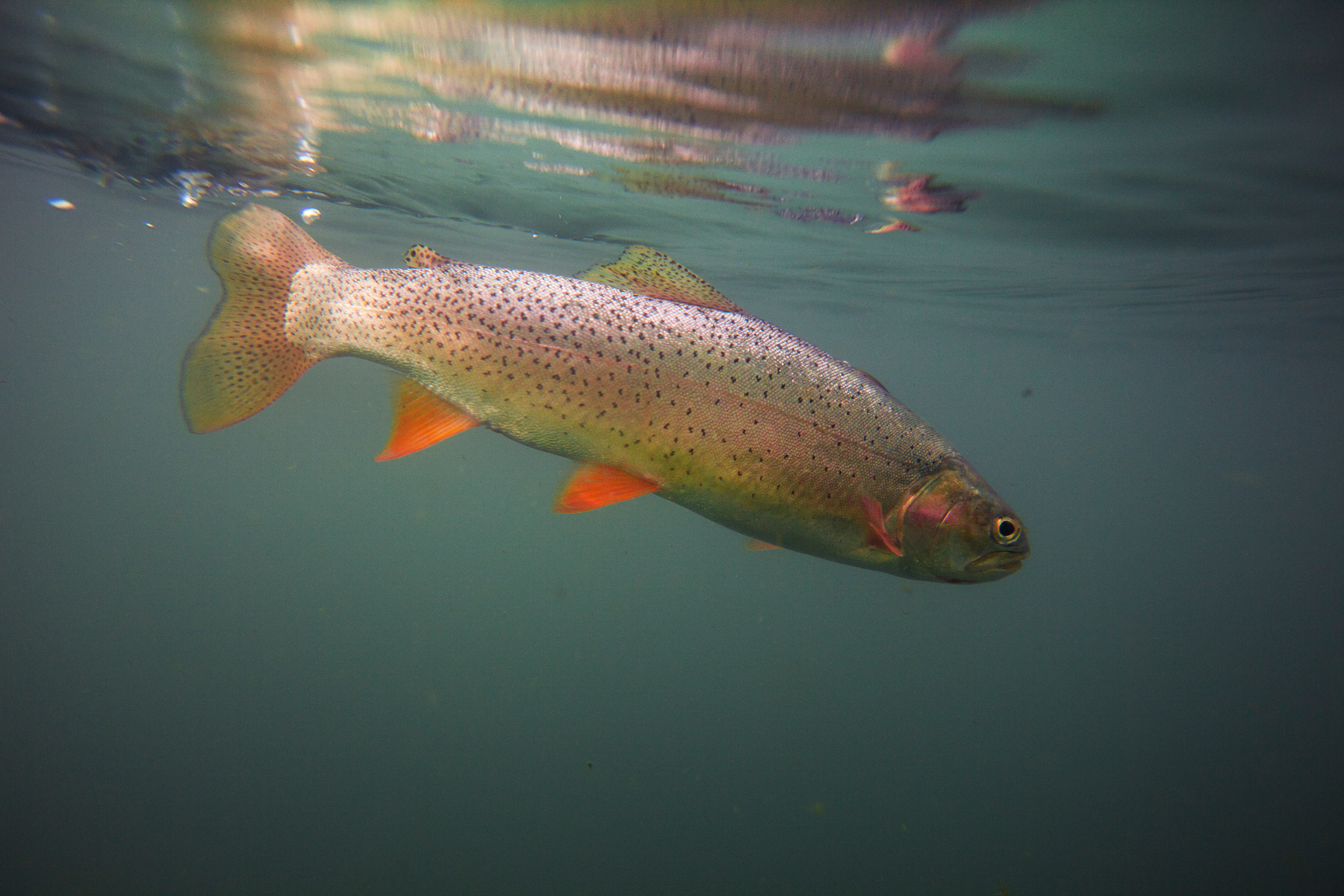Cutthroat trout
(Oncorhynchus clarkii)

Description
The cutthroat trout (Oncorhynchus clarkii) is a fish species of the family Salmonidae native to cold-water tributaries of the Pacific Ocean, Rocky Mountains, and Great Basin in North America. As a member of the genus Oncorhynchus, it is one of the Pacific trout, a group that includes the widely distributed rainbow trout. Cutthroat trout are popular gamefish, especially among anglers who enjoy fly fishing. The common name "cutthroat" refers to the distinctive red coloration on the underside of the lower jaw. The specific name clarkii was given to honor explorer William Clark, coleader of the Lewis and Clark Expedition. Throughout their native and introduced ranges, cutthroat trout vary widely in size, coloration and habitat selection. Their coloration can range from golden to gray to green on the back. Cutthroat trout can generally be distinguished from rainbow trout by the presence of basibranchial teeth at the base of tongue and a maxillary that extends beyond the posterior edge of the eye. Depending on subspecies, strain and habitat, most have distinctive red, pink, or orange linear marks along the underside of their mandibles in the lower folds of the gill plates. These markings are responsible for the common name "cutthroat", first given to the trout by outdoor writer Charles Hallock in an 1884 article in The American Angler. These markings are not unique to the species. Some coastal rainbow trout (Oncorhynchus mykiss irideus) and Columbia River redband trout (O. m. gairdneri) populations also display reddish or pink throat markings.
Taxonomic tree:







